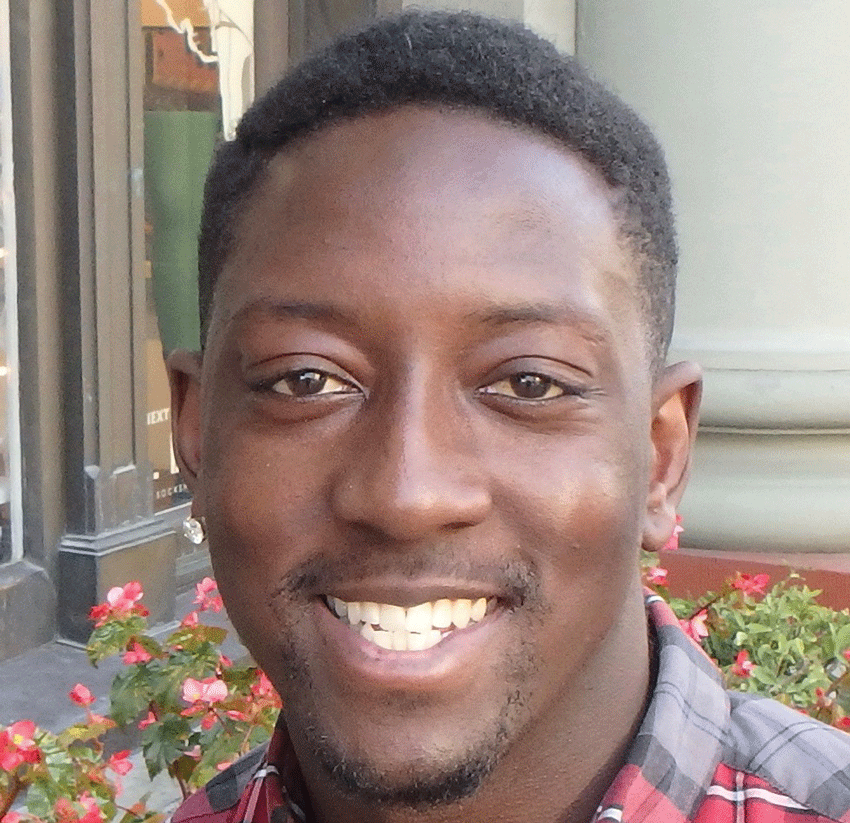When Nondo Estrada left behind a 401k and a career in management at UPS to become a dental hygienist, he researched education options carefully. His brother had been diagnosed with early stage cancer by an observant dental hygienist, an event that had shown Estrada the power of a public health career and inspired him to go back to school.
“I went to orientations at Carrington, Foothill and Cabrillo,” he says. “I chose Cabrillo because they seemed so interested in the success of the students.”
But ever since the state changed rules on repeatability at community colleges, the future of Cabrillo’s Dental Hygiene Program and the accompanying Dental Hygiene Clinic, which served 3,000 community members last year—many of them low-income—has been uncertain.
In 2014, the state mandated that units at community colleges were no longer repeatable. They had aimed the decision at classes like swimming, yoga and choir, which some community members had been attending for more than a decade. Still, some departments geared for students learning a new trade—like journalism, where students often retook classes several times—have suffered too. Though interest in the Dental Hygiene Program has remained consistent, Cabrillo’s overall enrollment has dropped steadily, and the administration was forced to make tough budget decisions—like cutting the Dental Hygiene program in half.
“We determined that Dental Hygiene could continue as an intact program with a class admission every other year, rather than every year,” says Superintendent of Instruction Kathleen Welch.
But students, staff and instructors don’t see it as a viable solution. “If we could accept a class every other year, we’d do it,” explains Dr. Bridgete Clark, Director of Dental Hygiene at Cabrillo and the only full-time instructor. “But our curriculum won’t allow it. It just doesn’t work.”
In January 2015, a last-minute donation of $100,000 saved the first class that would have been eliminated. Thanks to the generosity of former graduate Theresa Crocker and her husband Richard, Estrada and the other students in his cohort will graduate this spring. Last-minute donations saved the class of 2019, too, but everyone agrees the clinic needs a more sustainable model to prevent the stress of desperate eleventh-hour fundraising and avoid cutting classes.
Students insist that the continuity of annual classes is integral to their success. For instance, every incoming student is assigned a second-year student “buddy” as a mentor. “All through my first year here, I had weekly meetings with my big buddy,” explains Estrada. “And now that I’m a second-year, I’m really committed to the success of my little buddy. I orient her to the instruments—there’s 15 of them!—pass on what I have learned about interacting with patients, and help her with self-care.”
This kind of support and mentorship contributes to a pass rate of almost 100 percent on board exams and means graduates have an easy time finding jobs, clinic leaders say. “Our program is well regarded by dentists all over the state,” explains former graduate and current instructional assistant Elicia Hammon. “After I graduated in 1996, I went on a working interview and was employed there for 15 years.”
In 2012, Hammon returned to her alma mater as an adjunct teacher. Half of the 15 part-time instructional assistants at the program are alumni. “We do office work, fix equipment, order supplies and help teach labs,” Hammon says. “I put in a lot of volunteer hours.”
If Cabrillo were to offer only the Dental Hygiene Program every other year, Hammon and her co-workers may be looking for other jobs. “We would probably only need two-and-a-half adjuncts if the administration’s plan went through,” says Dr. Clark with a sigh. “A lot of people would lose their jobs. Our main focus is on educating our students, but we can’t provide the same quality of education with a class every other year.”
The quality instruction also results in excellent care at the low-cost dental clinic.
“I tried to convince my husband to come here for two-and-a-half years,” says Lisa Lavagnino, the front-office specialist at the clinic. “When he finally did, he said it was the best cleaning of his life. I still get my X-rays here, even though my insurance will cover it elsewhere. The amount of enthusiasm and care and personal attention the students put into each patient, it’s just amazing.”
The clinic sees plenty of returning patients, according to Lavagnino. “We have one Florida couple who flies to San Jose every year to visit family, and makes a special trip to Cabrillo to get their teeth cleaned,” she says.
Care is time-consuming at the clinic, but the low cost attracts people who might not have access to dental care otherwise. “I’m a senior citizen and so appreciate the dental care they provide for me,” one patient tells GT. “Medicare does not provide dental insurance, and I can’t afford it.”
The clinic even has at least one millionaire patient, who tells Clark that he just really likes the students.
If the program gets reduced to running every other year, the clinic itself might end up in jeopardy. “First-year students don’t see patients until the second semester,” explains Dr. Clark. “So our clinic would be closed in the fall every other year, and we’d lose a lot of patients and even more income. Patients who are the most in need, who have the most advanced problems, wouldn’t be able to get consistent care.”
In order to continue annual matriculating classes, the Cabrillo Dental Hygiene Program needs to come up with $140,000 every year. Staff work hard to make up that shortfall. “We’ve started running a class for out-of-state hygienists and begun offering continuing education post-graduate classes,” explains Dr. Ian Haslam, Cabrillo’s Dean of Health, Athletics, Wellness and Kinesiology. “If we could fill a class twice a year, we’d have the $140,000.”
Clark also hopes to partner with Salud Para La Gente, an award-winning local health clinic that provides services, including dental care, regardless of patients’ ability to pay.
“There’s got to be somebody out there who wants to make a huge donation,” Clark says wistfully. “If someone donated a million dollars, we could establish an endowment and be self-sustaining. Then we could focus all our energy on education and service instead of scrambling for funds.”












 Find one female you know that doesn’t think about her weight, appearance, or body at least a few times a day. Whether it’s the off-the-cuff remark about eating “too much” for lunch, or not having a good hair day, women are socialized to obsess over their outsides—and it affects men, too. It’s why Taryn Brumfitt created a documentary about learning to embrace all of our shapes and sizes after her 2013 before-and-after image sparked an international media frenzy. “This body of mine is not an ornament,” says Brumfitt in the film. “It’s a vehicle.”
Find one female you know that doesn’t think about her weight, appearance, or body at least a few times a day. Whether it’s the off-the-cuff remark about eating “too much” for lunch, or not having a good hair day, women are socialized to obsess over their outsides—and it affects men, too. It’s why Taryn Brumfitt created a documentary about learning to embrace all of our shapes and sizes after her 2013 before-and-after image sparked an international media frenzy. “This body of mine is not an ornament,” says Brumfitt in the film. “It’s a vehicle.” 





















